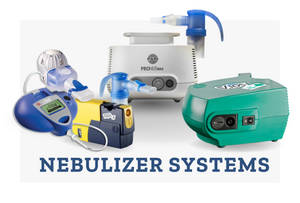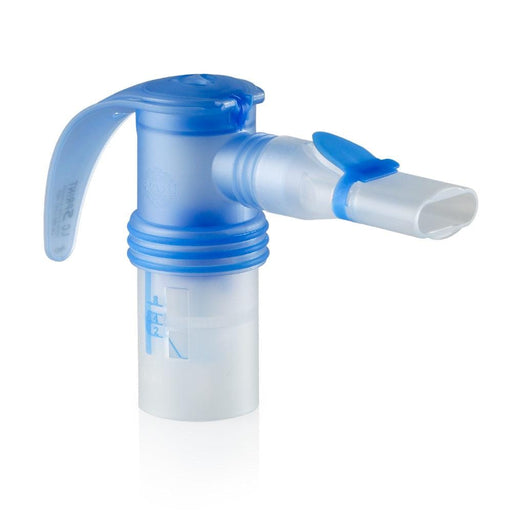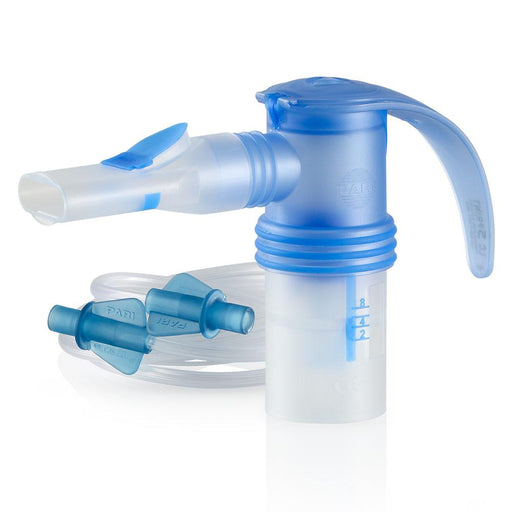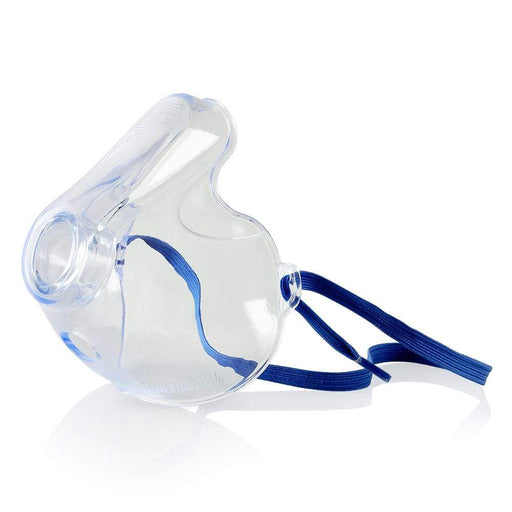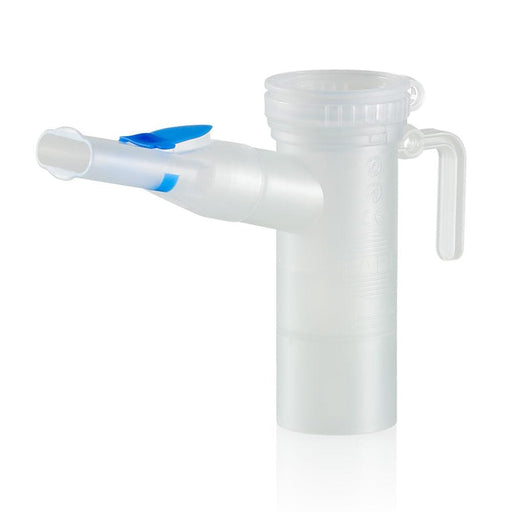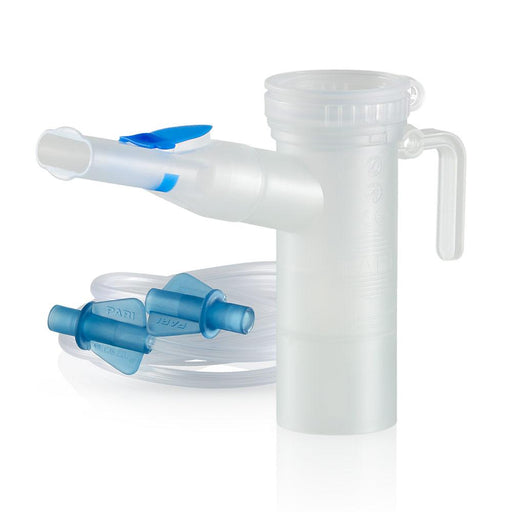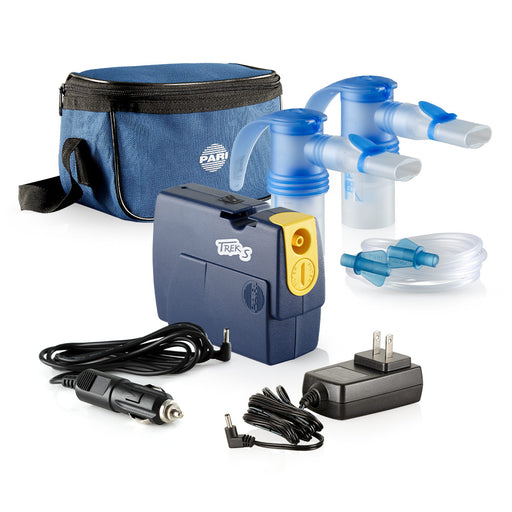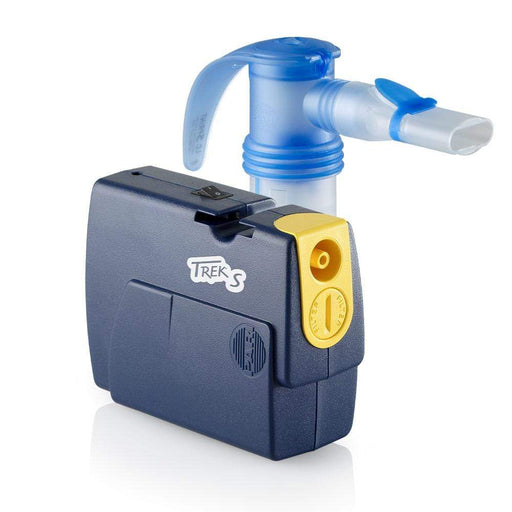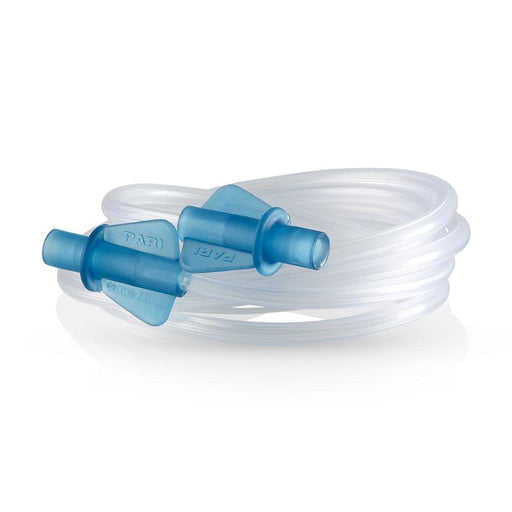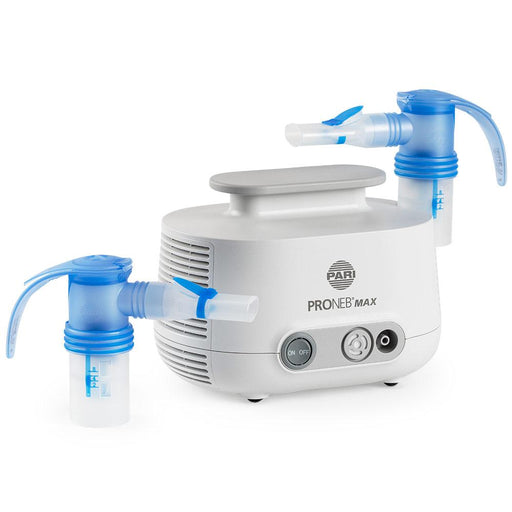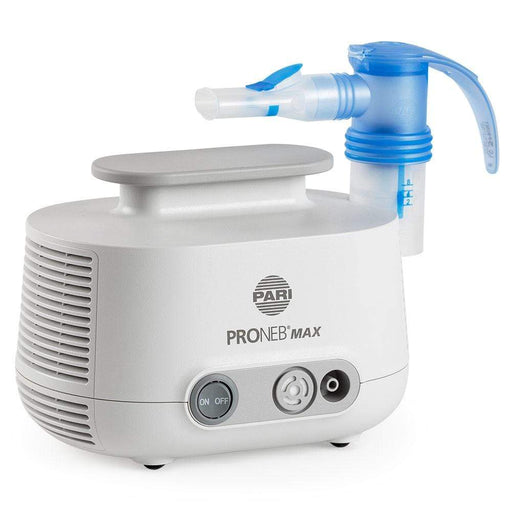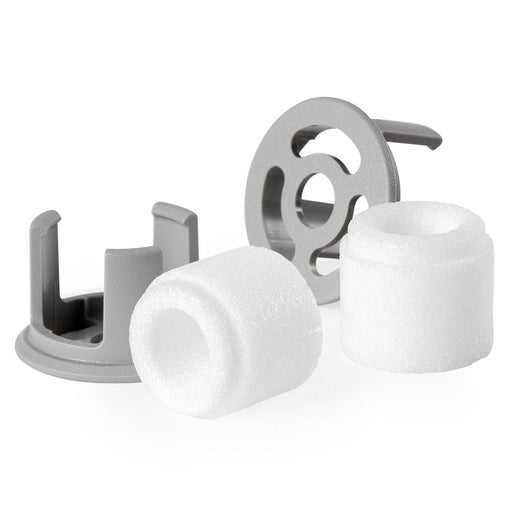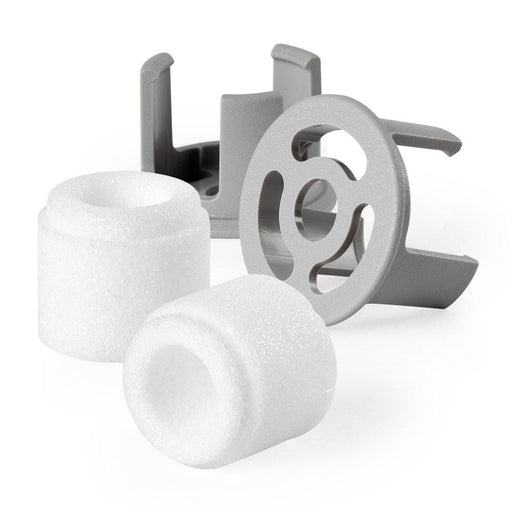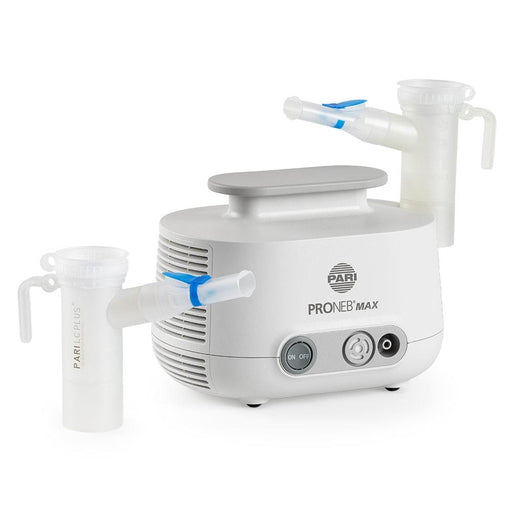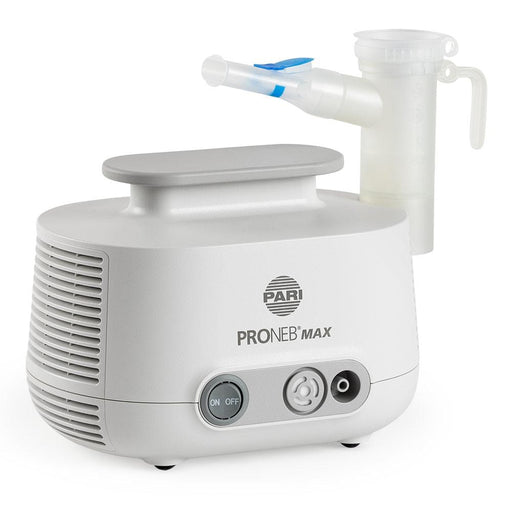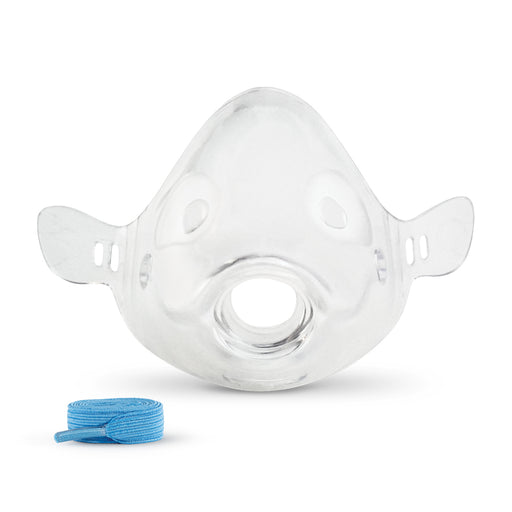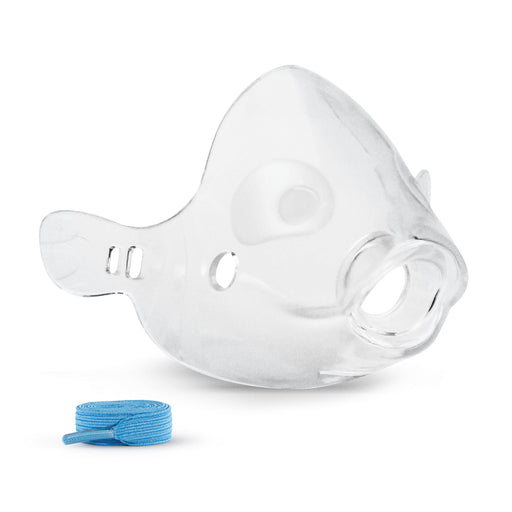
How to Prepare for Flu Season: Nebulizer Readiness & Tips
The flu is unlike the common cold in that symptoms can range from mild to severe. Catching influenza not only keeps you from going to work and taking care of your family, but it can also take you off your feet for days or weeks at a time, depending on the severity of your symptoms. Not to mention, when children get the flu, managing their symptoms can be an additional challenge.
When is Flu Season
Flu season starts in October and peaks during January or February, and sometimes lasts until May.¹ This means your family may be at risk of catching the highly contagious influenza virus for six months of the year. The flu is also quite common, which means your chances of encountering someone with the flu this year are high.
During the 2024-2025 flu season, approximately 43 million people in the United States experienced flu symptoms. That year, the flu sent about 37 million Americans to the doctor and about 560,000 people to the hospital. Sadly, influenza claimed the lives of 38,000 people that year.²
People infected with the flu virus can spread it to others, even if they do not have symptoms. The influenza virus passes from person to person mainly through droplets spread when the infected person sneezes, coughs, or talks. These droplets can land on a bystander's mouth or nose, or on a surface that the bystander touches with their hand before touching their nose, mouth, or eyes. The bystander can also inhale the droplets directly into their lungs. When sneezing or coughing, the droplets can spread up to six feet.
Fortunately, you can take steps to prepare your family for flu season.
Ways to Prepare for Flu Season
Be Aware of Flu Symptoms
Take action right away if you or a family member develops any of the following flu symptoms:
-
Cough
-
Sore throat
-
Stuffy or runny nose
-
Muscle aches or body aches
-
Headache
-
Fatigue
Avoid Close Contact with Others
Avoid being within six feet of people who are sick with the flu. Since people can spread the flu before they know they are sick, it is wise to avoid close contact with others.
If You Get the Flu, Keep Your Distance from Family Members
To prevent the rest of your family from getting sick, try to isolate yourself by staying in a room away from others. Do your share to reduce the spread of the flu by staying home. Cover your mouth and nose when sneezing or coughing.
Wash Your Hands and Keep Frequently-Touched Surfaces Clean
Using soap and water or hand sanitizer helps remove germs from your hands, reducing the risk of transferring the viruses to your nose, mouth, or eyes. Clean and disinfect surfaces often.
Get Vaccinated
Getting a flu vaccine is the best way to reduce the risk of the flu. The Centers for Disease Control and Prevention (CDC) recommends that every person ages six months and older get this seasonal vaccination to reduce illness, decrease visits to the doctor, and prevent missed work and school days.
Stock Up on Medications, Fluids, and Food
When you're sick with the flu, you may not feel well enough to go to the store for supplies. At the beginning of flu season, stock up on soups and broths, yogurts, and oatmeal. Make sure you add foods that are high in vitamin C to your weekly grocery list, such as oranges and orange juice, strawberries, kiwi, and cantaloupe.
Ask Your Doctor About a Nebulizer
Nebulizer systems deliver liquid medications in the form of a vapor. Vaporizing liquid medication makes it easy to inhale the medicine deep into the lungs. Some medications delivered through a nebulizer work to open up the airways to reduce wheezing, coughing, and difficulty breathing.
Your doctor will determine if a nebulizer can provide relief from flu symptoms (such as wheezing). Nebulizers also deliver medication that can ease symptoms from lung infections, bronchitis, and chronic conditions such as asthma or COPD. These conditions may sometimes be confused with the flu.
While doctors don't normally prescribe nebulizers for a mild cough, nebulizer treatments may alleviate chronic coughing and other symptoms of the flu. Children's nebulizers are specially designed to make treatment fun, so your child gets the most out of their breathing treatments. An adult nebulizer mask is handy for anyone who has trouble holding a handheld nebulizer or who wants to work on a computer during their treatment.
Your doctor will need to prescribe a nebulizer. Speak with your family doctor or pediatrician to get a prescription for a nebulizer system and the cough medication you need.
FAQ
What are the Best Ways to Strengthen My Immune System Before Flu Season?
Building healthy habits early, such as eating nutrient-rich foods, staying active, getting enough sleep, and managing stress, can help keep your immune system resilient during flu season. Vaccination and good hygiene practices add an extra layer of protection.
How Can I Reduce the Spread of Flu at Home or Work?
Wash your hands often, cover coughs and sneezes, disinfect high-touch surfaces, and staying home when sick are effective steps to minimize flu transmission in households and workplaces.
When Should I Get a Flu Shot for the Best Protection?
Health experts recommend getting vaccinated before flu activity becomes widespread, ideally in early fall. The vaccine takes about two weeks to build full immunity, so getting it before flu season peaks provides the most protection.
Choose Clinically-Proven Nebulizers
Consult with a nebulizer professional, like Nebology, to learn which models may be the best nebulizer system for you or your family. The PARI eFlow Nebulizer is lightweight, small, and silent – plus, it works with batteries or an AC/DC outlet. The PARI eRapid Nebulizer System with eFlow Technology offers a short inhalation time for quicker treatments so you can get more time back with your family, and helps you get your breathing treatments while on the go.
For more information on how to prepare yourself and your family for flu season, consult with your doctor before you get sick.
¹https://www.cdc.gov/flu/about/season.html
²https://www.cdc.gov/flu/whats-new/2025-2026-influenza-activity.html
SHOP CLINICALLY PROVEN NEBULIZER SYSTEMS & SUPPLIES
-
PARI LC Sprint Reusable Nebulizer Cup & Tubing: Speed & Comfort Combined
Original price $15.95 - Original price $15.95Original price$15.95$15.95 - $15.95Current price $15.95In stockOriginal price $15.95 - Original price $15.95Original price$15.95$15.95 - $15.95Current price $15.95 -
PARI LC Adult Aerosol Mask: Comfortable, Effective Medication Delivery
Original price $6.00 - Original price $6.00Original price$6.00$6.00 - $6.00Current price $6.00In stockOriginal price $6.00 - Original price $6.00Original price$6.00$6.00 - $6.00Current price $6.00 -
PARI LC Plus Reusable Nebulizer Cup & Tubing: Reliable Aerosol Delivery
Original price $15.95 - Original price $15.95Original price$15.95$15.95 - $15.95Current price $15.95In stockOriginal price $15.95 - Original price $15.95Original price$15.95$15.95 - $15.95Current price $15.95 -
Filters for PARI Vios, Ultra II, and Trek S System - 2 Per Package
Original price $9.45 - Original price $9.45Original price$9.45$9.45 - $9.45Current price $9.45In stockOriginal price $9.45 - Original price $9.45Original price$9.45$9.45 - $9.45Current price $9.45 -
PARI Trek S Portable Nebulizer System with LC Sprint: High-Quality On-the-Go Therapy
Original price $79.00 - Original price $189.00Original price$79.00 - $189.00$79.00 - $189.00Current price $79.00In stockOriginal price $79.00 - Original price $189.00Original price$79.00 - $189.00$79.00 - $189.00Current price $79.00 -
PARI Wing Tip Tubing: Secure, Tangle-Free Connection for Better Treatments
Original price $8.00 - Original price $8.00Original price$8.00$8.00 - $8.00Current price $8.00In stockOriginal price $8.00 - Original price $8.00Original price$8.00$8.00 - $8.00Current price $8.00 -
PARI PRONEB Max Nebulizer System with LC Sprint: Powerful & Efficient
Original price $99.00Original price $99.00 - Original price $99.00Original price $99.00Current price $84.99$84.99 - $84.99Current price $84.99In stockOriginal price $99.00Original price $99.00 - Original price $99.00Original price $99.00Current price $84.99$84.99 - $84.99Current price $84.99Sale -
Filters for PARI PRONEB Max System (2 Per Package): Clean, Efficient Treatments
Original price $9.95 - Original price $9.95Original price$9.95$9.95 - $9.95Current price $9.95In stockOriginal price $9.95 - Original price $9.95Original price$9.95$9.95 - $9.95Current price $9.95 -
PARI PRONEB Max Nebulizer System with LC Plus: Effective Heavy-Duty Therapy
Original price $99.00Original price $99.00 - Original price $99.00Original price $99.00Current price $84.99$84.99 - $84.99Current price $84.99In stockOriginal price $99.00Original price $99.00 - Original price $99.00Original price $99.00Current price $84.99$84.99 - $84.99Current price $84.99Sale -
PARI Bubbles Pediatric Aerosol Mask: Gentle, Fun Treatments for Kids
Original price $5.95 - Original price $5.95Original price$5.95$5.95 - $5.95Current price $5.95In stockOriginal price $5.95 - Original price $5.95Original price$5.95$5.95 - $5.95Current price $5.95

